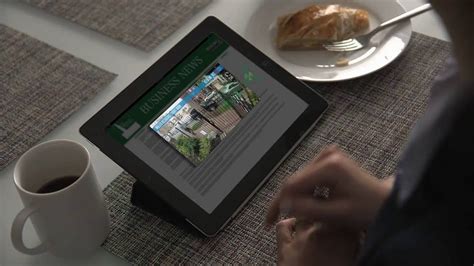Understanding Access Control Models
To properly control access to workspace content, it’s essential to understand the various access control models available. The three primary access control models are:
-
Discretionary Access Control (DAC): In this model, the owner of a resource determines who can access it and what actions they can perform. DAC is flexible but may lead to security risks if not managed carefully.
-
Mandatory Access Control (MAC): MAC is a stricter model where access is controlled by the system administrator based on predefined security policies. This model is often used in high-security environments, such as government or military organizations.
-
Role-Based Access Control (RBAC): RBAC grants access to resources based on a user’s role within the organization. Permissions are assigned to roles, and users inherit these permissions when they are assigned to a role. RBAC simplifies access management and is widely used in enterprise settings.
Comparing Access Control Models
| Model | Flexibility | Security | Management Complexity |
|---|---|---|---|
| DAC | High | Low | High |
| MAC | Low | High | High |
| RBAC | Medium | High | Low |
Implementing Role-Based Access Control
Given its balance of security and manageability, RBAC is often the preferred choice for controlling access to workspace content. To implement RBAC effectively, follow these steps:
-
Identify roles: Analyze your organization’s structure and identify the various roles that users may have, such as manager, developer, or sales representative.
-
Define permissions: Determine the permissions required for each role to perform their job duties. Permissions may include read, write, delete, or share access to specific resources.
-
Assign roles to users: Map users to the appropriate roles based on their responsibilities and job functions.
-
Regularly review and update: Periodically review role assignments and permissions to ensure they remain accurate and up-to-date. Update roles and permissions as needed to reflect changes in the organization or user responsibilities.
Example RBAC Permissions Matrix
| Role | Read | Write | Delete | Share |
|---|---|---|---|---|
| Manager | ✓ | ✓ | ✓ | ✓ |
| Developer | ✓ | ✓ | ✓ | |
| Sales Rep | ✓ |

Best Practices for Workspace Access Control
To ensure the security and integrity of your workspace content, consider the following best practices:
-
Principle of Least Privilege (PoLP): Only grant users the minimum permissions necessary to perform their job duties. This reduces the risk of accidental or intentional data breaches.
-
Separation of Duties (SoD): Divide critical tasks among multiple users to prevent any single user from having excessive control over sensitive resources.
-
Regular access reviews: Conduct periodic access reviews to identify and remove unnecessary or outdated permissions, ensuring that users only retain access to the resources they need.
-
Auditing and monitoring: Implement auditing and monitoring mechanisms to track user activities and detect potential security incidents or unauthorized access attempts.
-
Employee training: Educate employees on security best practices, such as strong password management, data handling guidelines, and the importance of reporting suspicious activities.

Tools for Controlling Workspace Access
Various tools and technologies are available to help organizations control access to workspace content effectively. Some popular options include:
-
Identity and Access Management (IAM) systems: IAM solutions, such as Okta, Azure Active Directory, or AWS IAM, provide centralized user management, authentication, and authorization capabilities.
-
Access control lists (ACLs): ACLs allow you to define granular permissions for individual resources, specifying which users or groups can access them and what actions they can perform.
-
Encryption and data protection: Encrypting sensitive data ensures that only authorized users with the appropriate decryption keys can access it. Tools like BitLocker, FileVault, or VeraCrypt can help protect data at rest.
-
Data Loss Prevention (DLP) solutions: DLP tools, such as Microsoft Information Protection or Symantec DLP, can monitor and control the flow of sensitive data, preventing unauthorized access or exfiltration.
Comparison of IAM Solutions
| Solution | Cloud-based | On-premises | Multi-factor Authentication | User Provisioning |
|---|---|---|---|---|
| Okta | ✓ | ✓ | ✓ | |
| Azure Active Directory | ✓ | ✓ | ✓ | |
| AWS IAM | ✓ | ✓ | ✓ |

Challenges and Considerations
While implementing workspace access control is crucial, organizations may face several challenges and considerations:
-
Complexity: As organizations grow and evolve, managing access control can become increasingly complex. It’s essential to maintain a balance between security and usability.
-
Scalability: Access control systems must be able to scale to accommodate a growing number of users, roles, and resources.
-
Integration: Ensuring that access control mechanisms integrate seamlessly with existing systems and workflows can be challenging.
-
Compliance: Organizations must adhere to various industry-specific regulations and standards, such as HIPAA, GDPR, or PCI-DSS, when controlling access to sensitive data.
-
User experience: Implementing access control measures should not significantly hinder user productivity or create frustration. Striking a balance between security and user experience is crucial.
Frequently Asked Questions (FAQ)
-
What is the difference between authentication and authorization?
Authentication is the process of verifying a user’s identity, while authorization determines what actions a user is allowed to perform on a resource. -
How often should I review user access permissions?
It’s recommended to review user access permissions at least quarterly, or more frequently if your organization experiences high turnover or significant changes in roles and responsibilities. -
Can I combine multiple access control models in my organization?
Yes, you can use a combination of access control models depending on your organization’s specific security requirements and the sensitivity of the resources being protected. -
How can I ensure that terminated employees no longer have access to workspace content?
Implement a strict off-boarding process that includes immediately revoking access to all systems and resources upon an employee’s termination. Regularly review and update access permissions to ensure that no outdated or unnecessary permissions remain active. -
What should I do if I suspect unauthorized access to workspace content?
If you suspect unauthorized access, immediately investigate the incident, gather evidence, and follow your organization’s incident response plan. This may include revoking the suspected user’s access, conducting a thorough analysis of the affected systems, and notifying relevant stakeholders and authorities if necessary.
Conclusion
Controlling access to workspace content is essential for protecting sensitive data, maintaining security, and ensuring that users only have access to the resources they need to perform their job duties. By understanding access control models, implementing role-based access control, following best practices, and leveraging the right tools, organizations can effectively manage access to their workspace content.
Remember to regularly review and update access permissions, monitor user activities, and provide ongoing employee training to maintain a robust and secure access control system. By staying proactive and adapting to evolving security threats and organizational changes, you can safeguard your workspace content and minimize the risk of data breaches or unauthorized access.

No responses yet